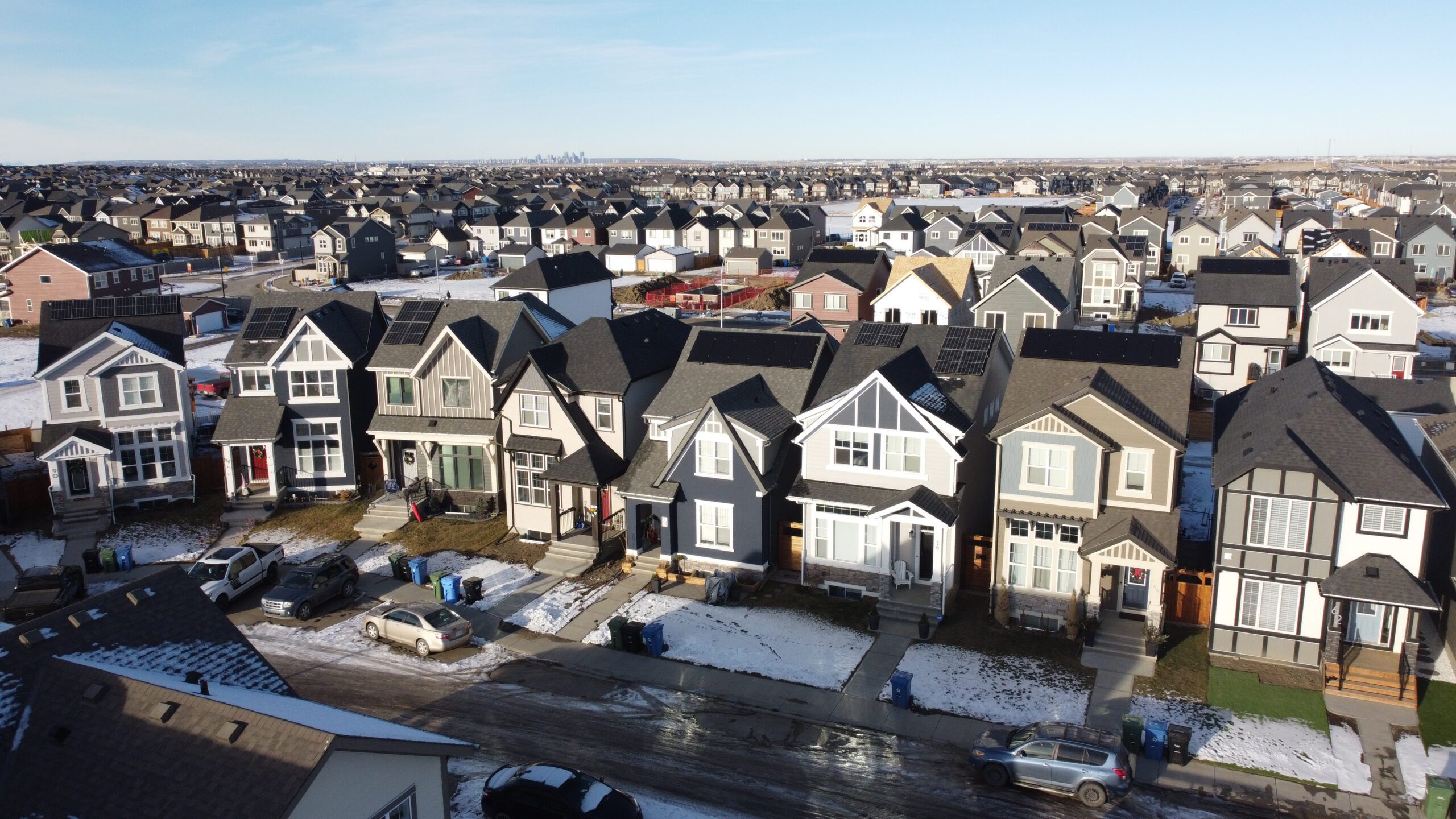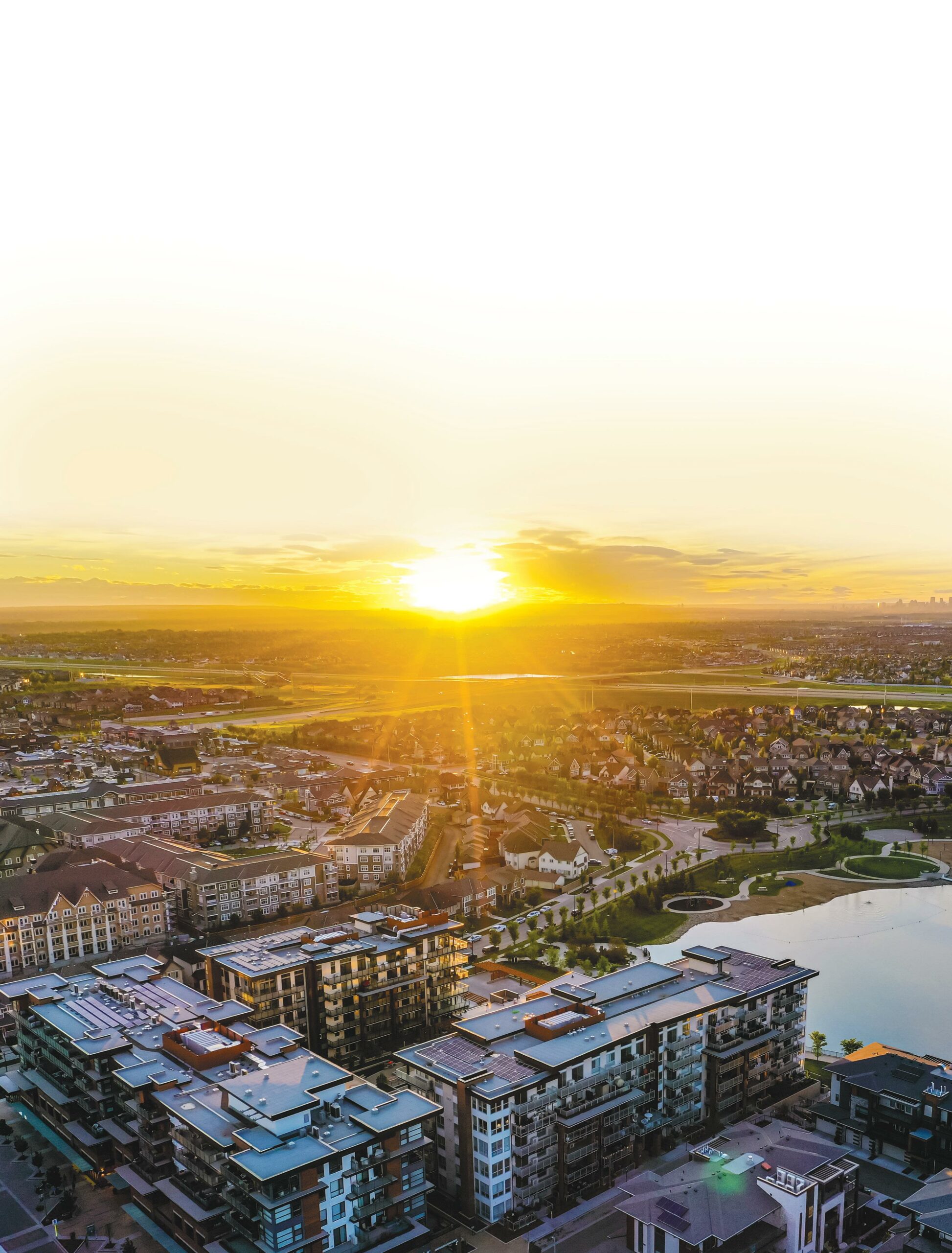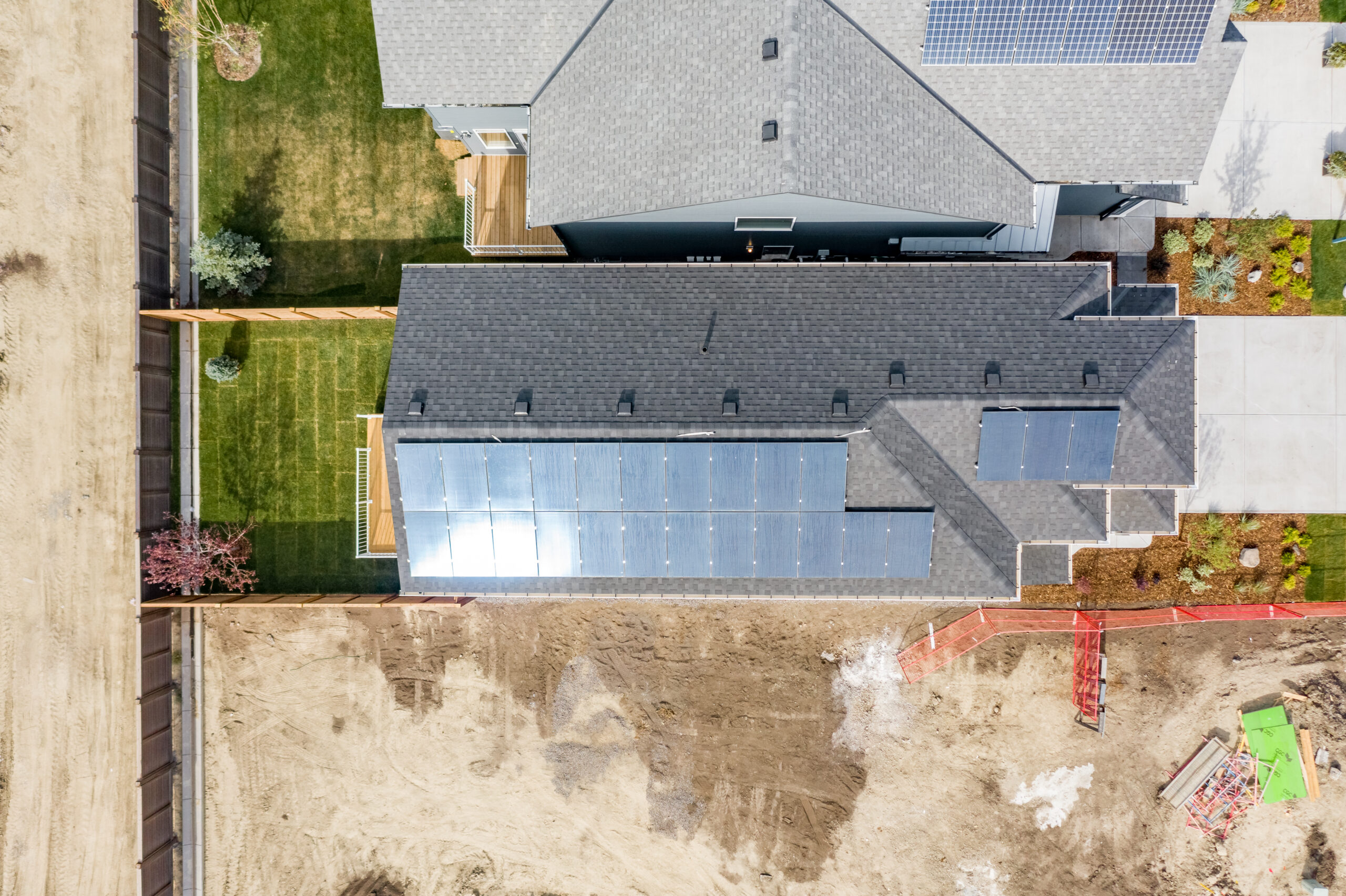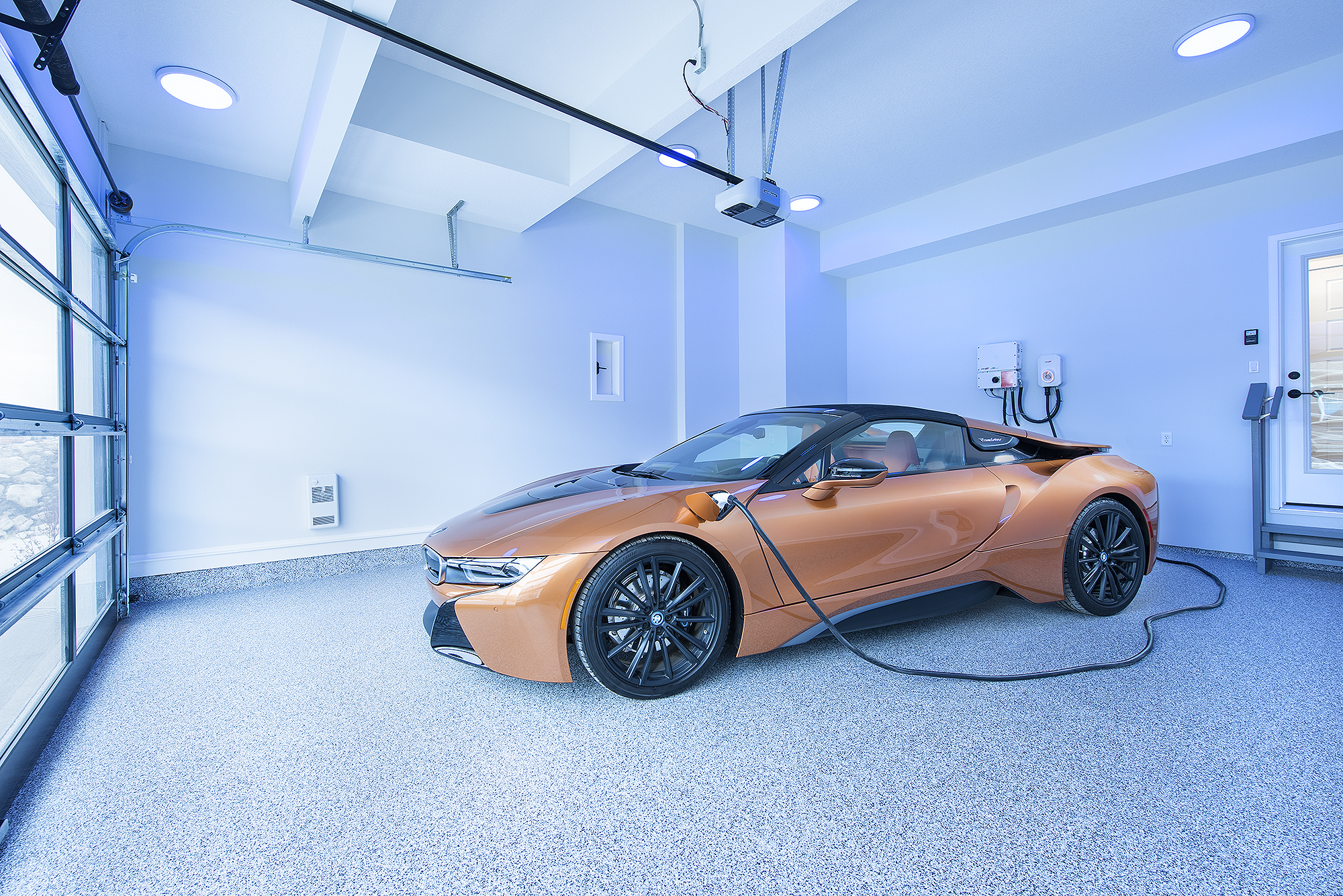Home construction sustainability represents one of North America’s greatest opportunities to streamline and decarbonize peoples’ day to day lives. The Federal and British Columbia governments have each seen that opportunity and started the process of moving new buildings towards net zero carbon emissions by 2030-2032. Technology like solar energy will be a critical piece in the complex puzzle of disentangling humanity from our carbon addiction to achieve those net zero goals.
Until relatively recently, the battle against climate change and for sustainability in Canada has been left to individuals and businesses who care enough about those issues to invest in low carbon methods and technologies. Despite Alberta’s reputation as a province of climate laggards, one of the province’s most established production home builders, Jayman BUILT, has a multi-decade story of positive sustainability work behind them. Years before they collaborated with SkyFire Energy to standardize solar panels on every new single family home starting in 2019, Jayman and its forward thinking staff were pushing forward on efficiency and construction sustainability as a standard.
Construction Sustainability Priorities
While Jayman’s dedication to the cause of sustainability stretches back even further, the easiest date to start with is 2004. It was then that forward thinking leadership saw the writing on the wall about resource usage and carbon emissions and developed a standard to apply to new home construction: Built Green Canada.
Today, Built Green Canada is an industry standard for home construction’s environmental impact in multiple provinces. Back then, it was considered something of an oddity. If you recall, climate change was still being called global warming, and at the time an oil rich Alberta would have looked at sustainability as more of a curiosity than an essential.
Dave Krasman, Jayman BUILT’s Director of Corporate Purchasing, was there when leadership of the company, especially current Chairman & CEO Jay Westman and Krasman’s predecessor David Bengert, first began to envision a standard for environmentally conscious building practices. He spoke with us to share insights about how Jayman got to the remarkable place it’s at: leading the nation in sustainable building practices, not to mention occupying a critical role in the Alberta home building landscape.
“Built Green is all about a holistic approach,” Krasman shares. “There’s energy saving, water conservation, waste reduction, sustainability, and homeowner comfort, those are the things we focus on. It was Jay [Westman]’s vision along with David Bengert’s efforts that created the Built Green Canada program that thrives today.”

Jayman solar as far as the eye can see.
What must have seemed like a curious business priority in the early 2000s would have been doubly so in dyed-in-the-wool conservative Alberta. Looking back, of course, it was clever and prescient to focus on construction sustainability.
“They were far ahead of their time,” Dave continues. “Honestly, back then I started at Jayman, a lot of us thought, ‘What is this green stuff?’ This was back in 2002… That was the typical thinking of most production builders and it didn’t take long to realize we could do some of this stuff and it wouldn’t cost us more. We just chose the right products to add each year and our efficiency got better and better, so it was a great thing to be part of.”
Order of Operations
Around 2004,Jayman became the first builders to make high efficiency furnaces standard in their new builds. As the standard of Built Green grew and became adopted more widely across Western Canada, so too did Jayman’s advancements into efficiency and construction sustainability.
In 2007, the Quantum wall system became standard, and would eventually be reconfigured for today’s next generation of low impact homes. Its proprietary method of insulation led to much higher R insulation values for homes using that wall system, and was so successful it would become a critical ingredient now, in a more climate-sensitive time.
2008’s U.S. housing recession forced the entire industry to strip back, so the Quantum wall system was made optional as construction costs were cut back to streamline and match a very lean world market.
On the other side of that financial dip, the previous Dave in the Purchasing chair, Dave Bengert, was working with Natural Resources Canada in 2010 on a subcommittee to design what would become known as EnerGuide, an official government standard for energy efficiency.
Fittingly enough, that extracurricular activity was paired with significant momentum for Jayman’s own sustainability program. Heat recovery ventilation (HRV) systems became standard in 2011, followed by the Navien tankless water heater in 2014, which was also when Jayman became the first in the Alberta market to standardize a 95% efficient furnace.
As 2015 rolled around, a brand new energy code went online in Canada, and threw the homebuilding world into a tiny bit of disarray as they looked to step up their efficiency game yet again.
“[The new code] was a big deal,” Dave recalls with some bemusement. “We were ahead of the game, and so were a few other builders like Landmark and some smaller [companies] in Alberta, but most people thought, ‘What is this?’ We weren’t afraid of it all because we had started measuring our energy performance at that time… and we had no problems adjusting to the new energy code. Our energy advisors started measuring how many gigajoules of energy we were using per year on every home.”
Turning Point
Encouraged by the new energy code, 2016 proved to be a turning point. In that year, not only did Jayman create their Core Performance standard for their home’s mechanical systems, they also started working with SkyFire Energy to rough in wiring for potential future solar panel installations. Along with some internal reconfiguration, 2016 would see Jayman begin the journey that would land them far ahead of the construction pack in terms of eco-oriented building practices.

Photo by Top Shot Media. Westman Village with full solar complement.
“That’s how Core Performance started,” Dave remembered fondly. “We said, the core of every home will always have triple pane windows, a high efficiency tankless water heater, a heat recovery ventilator, better insulation, and other energy efficient items. Every home has Core Performance, so that’s the platform of every home, and the Fit and Finish levels are just optional interior finish packages.”
“Every home is built to the same quality standard,” he continues. “It’s like buying many cars nowadays, they really all have the same drivetrain with optional trim and convenience packages.” Just like any business success in a frenzied global market, the only way to keep up is to stay ahead, and a rigorous new energy code gave the Jayman team a perfect measuring stick for their own construction sustainability efforts.
“At that time in 2016 we were measuring every home for Energy Performance and comparing to the new 9.36 Energy Code and we found we were about 14% better on average than code,” Dave shares.” In 2018 we bumped up Core Performance to [include] R50 attic insulation, full LED bulbs with some LED recessed lighting. We were measuring our homes and with improvements we were then 16% better than code.”
With that, the story reaches a pleasant point of contact, where two clean, green efforts merge together. While Jayman was soldiering on in its world, SkyFire was a plucky little company carving out its own corner on the cutting edge of renewable energy technology in a very conservative conventional energy province. As pioneers of the technology in this market, SkyFire was the perfect partner to take on a project of such scope.
Dave Krasman and the Jayman BUILT team hit paydirt immediately when they made solar standard in 2019. “We knew it was a big deal because as soon as we did it we got calls from all over the country,” he shares. “We were contacted by [all kinds of] people and organizations, so it was nice and a great feeling to do that and be one of the first to do it.”
By 2020, Jayman BUILT’s efficiency measures had them operating 20% above Alberta building code expectations, a significant part of that success derived from over 2 megawatts of solar electricity installed on Jayman homes and properties, from single family homes to the 1,000+ panels on Westman Village in Mahogany. Those marquee solar efforts will only expand, as Jayman BUILT intends to outfit even their multifamily buildings with solar energy.
“So for 2020 we thought, what else could we do?” Dave muses. “So we came up with making sure we had the ability to charge an electric vehicle in all of our homes. We’re trying to future proof, we see what’s coming, with electric vehicles and hybrids becoming more popular, so we’re trying to make sure we’re ahead of the game.”
Net Zero: Construction Sustainability Game Changer
And yet, the team wasn’t done. “In 2021 we took a huge leap,” Dave says. “At Jayman we always had our eye on net zero. We went with solar first in 2019 because we knew the federal government had a goal of net zero ready by 2030 or 2032. We had done a lot already in energy efficiency, and we went with solar first because it’s the noticeable part, it’s the sexy part of a net zero home in my opinion, because most people don’t look at the wall and mechanical systems too closely. Some do if you’re kind of nerdy and into it, but a solar panel is something people can relate to.”

Jayman’s Net Zero home in Seton, south Calgary
With all the unending effort to stay ahead of the curve regarding renewable technology and efficiency in homebuilding, Jayman found themselves continuing to grow by leaps and bounds in 2021, to the point where they are essentially a decade ahead of Canada’s likely goal of every home mandated net zero ready by 2030-32. While there has been no formal announcement around that federal guideline, British Columbia has already implemented its STEP Code to ensure every new building in the province is net zero ready by 2032.
Now, in 2021, Jayman has an established method to make every new home net zero, which means it can already sell such units if customers care to buy them, but now they also have years to perfect and improve upon the methods that got them there. The process to achieve net zero was far from straightforward. If you recall that semi-shelved Quantum wall system from 2007, that project was revived as part of the push for net zero. In order to get that approved by the cities of Calgary and Edmonton, Jayman had to perform their own government approved testing to get approval from the Underwriters’ Laboratories of Canada (ULC), one of Canada’s nationally recognized standards for safety. Technically speaking, that was challenging. The wall system had to satisfy fire code for homes built very close to their lot neighbours, but also stay relatively affordable.
Life Ahead of the Curve
By jumping through those hoops and engaging with a long list of technical challenges, the pilot Net Zero home in Seton dropped its energy consumption from 89 gigajoules of energy per year for a typical Jayman BUILT home to around 40. Replace that 40 gigajoules of energy with solar, and voilà, net zero. With that Quantum Net Zero home in operation, Jayman has proven they can operate at a mind boggling 80% above energy code expectations.

Photo by Dustin Hoffert \ DCPiX Photography
That translates to a possible savings of around $2,300 per year of utility costs. With the increased cost of a Quantum Net Zero sitting around $60,000, the finances when working with 20 to 30 year mortgages add up favourably. Not only does a Net Zero Energy Home (NZEH) offset its carbon footprint, it offsets its own financial costs when factored over the long term.
“It’s always been our goal that we want to be ahead of the next code,” Dave told us. “We know how to get to the next code in 2032 now … We haven’t modelled every home that we build for net zero yet but we’ve done some of the most difficult and we know it works so we can confidently say we can build a net zero home on just about any of our plans.”
Where Jayman BUILT goes, the Alberta home building industry will follow, and in this case, construction sustainability is high on the list of advancements. The embrace of renewable holistic energy began long ago, and the more awake our community and business are to it, the smoother the transition will be.
Written by James Nason

